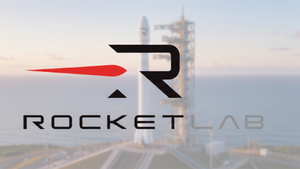
Crude oil futures have recently pulled back from multi-week highs, settling into a more moderate range as profit-taking by investors converges with mounting concerns over potential market oversupply. This easing comes despite persistent geopolitical tensions that keep the specter of Russian oil supply disruptions firmly in focus. The delicate balance between anticipated increases in global production and a cautious outlook on demand is now dictating price movements, creating a complex landscape for energy markets as the global economy navigates its path forward.
The recent moderation in crude prices, which saw Brent crude futures ease from a seven-week high above $66 per barrel and West Texas Intermediate (WTI) crude settle near $63 a barrel in late September 2025, is a multifaceted development. A primary driver has been investor profit-taking after a period of sustained gains, leading to a natural correction. However, deeper fundamental shifts are also at play. The International Energy Agency (IEA) has projected a more rapid increase in global oil supply this year, potentially leading to a larger surplus in 2026. This outlook is bolstered by increased output from OPEC+ members and a growing contribution from non-OPEC sources, including the United States, Canada, Brazil, and Guyana. Further exacerbating oversupply fears is the resumption of oil exports from Iraq's Kurdistan region, following an agreement with the federal government, which adds significant barrels back into the global market. Concurrently, a cautious demand outlook, highlighted by JPMorgan analysts noting only marginal year-on-year increases in U.S. air passenger data for September, suggests a potential slowdown in consumption, particularly as the peak demand season concludes and winter approaches.
Despite these downward pressures, the market remains acutely sensitive to potential disruptions in Russian oil supplies. Ongoing geopolitical tensions and military actions, particularly intensified Ukrainian drone strikes targeting Russian refineries and pipelines, continue to inject significant uncertainty. These attacks aim to cripple Moscow's military funding and have already forced some Russian refineries to operate at reduced capacity, prompting Russia to offer discounted crude, particularly to India. Furthermore, strong statements from NATO, promising a "robust" response to recent Russian airspace incursions, heighten concerns regarding the stability of Russian crude flows. The European Union (EU) is also preparing a new round of sanctions, reportedly targeting oil industry entities operating in third countries, including Chinese and Indian entities, to further restrict Russia's access to petrodollars. While the EU embargoed most seaborne Russian crude in late 2022, Brussels is now considering measures to phase out remaining pipeline deliveries to landlocked nations like Hungary and Slovakia, which currently operate under derogations. Russia, in response, is actively adjusting its export strategies, with India (NSE: RELIANCE) expected to increase its purchases of discounted Russian oil by 10-20% in September 2025 to help Moscow maintain export levels.
Market Movers: Winners and Losers in a Volatile Oil Landscape
The current dynamics in the crude oil market, characterized by easing prices amidst oversupply fears but underpinned by persistent Russian supply risks, create a mixed bag for public companies across the energy sector.
Major integrated oil and gas companies like ExxonMobil (NYSE: XOM) and Chevron (NYSE: CVX) could see their upstream (exploration and production) segments face headwinds from lower crude prices, potentially impacting their profitability and investment decisions in new projects. However, their diversified portfolios, including downstream (refining and marketing) operations, might benefit from cheaper crude feedstock, potentially boosting refining margins. Similarly, European giants like Shell plc (LSE: SHEL) and BP plc (LSE: BP) would experience similar pressures and opportunities. National oil companies, such as Saudi Aramco (TADAWUL: 2222), which play a significant role in OPEC+ decisions, will be closely watching market share versus price considerations. If OPEC+ prioritizes market share, as some forecasts suggest, it could lead to increased output but potentially lower per-barrel revenue.
For Russian oil companies like Rosneft (LSE: ROSN, though trading is restricted due to sanctions) and Gazprom Neft (LSE: SIBN, also restricted), the situation is complex. While drone attacks on refineries disrupt their domestic processing capabilities, their ability to reroute crude exports, particularly to Asian markets like India and China, at discounted prices, allows them to maintain some revenue streams. However, tightening EU sanctions targeting third-country entities involved in Russian oil trade could complicate these efforts, increasing logistical costs and limiting their market reach. Conversely, companies involved in oil transportation and logistics, especially those operating outside the direct purview of Western sanctions, might see increased demand for their services as Russia seeks new export routes. For instance, shipping companies with older fleets capable of handling sanctioned oil could potentially command higher freight rates, though they face significant reputational and legal risks. In the long term, the sustained focus on energy security and diversification away from Russian supplies could benefit alternative energy developers and related infrastructure companies, though their immediate impact on the crude oil market is indirect.
Broader Implications and Historical Parallels
The current crude oil market scenario extends far beyond immediate price fluctuations, embedding itself within broader industry trends and geopolitical shifts. The tension between anticipated oversupply and lingering supply disruption risks from Russia highlights the inherent volatility and interconnectedness of global energy markets. This situation accelerates the ongoing energy transition debate, as nations seek to bolster energy security by diversifying away from reliance on volatile fossil fuel sources, particularly from politically unstable regions. The aggressive EU stance on phasing out Russian energy, including future bans on pipeline gas and LNG imports, underscores a long-term strategic pivot that will reshape global energy trade flows.
The ripple effects of these dynamics are significant. Competitors in non-OPEC countries, such as U.S. shale producers, may face increased pressure on their margins if global crude prices remain subdued due to oversupply, potentially slowing investment in new drilling. Conversely, countries that continue to import Russian crude at a discount, like India and China, gain a competitive advantage in terms of energy costs for their industries, which could influence global manufacturing and trade balances. Regulatory and policy implications are profound, with the EU's expanding sanctions framework setting a precedent for how major economic blocs can leverage their market power to influence geopolitical outcomes. This move also forces a re-evaluation of energy infrastructure, as new pipelines and shipping routes are explored to bypass sanctioned regions and ensure diversified supply. Historically, similar periods of geopolitical tension combined with shifting supply-demand fundamentals, such as the oil shocks of the 1970s or the price crashes driven by OPEC's market share battles in the 1980s, offer valuable, albeit imperfect, comparisons. These events consistently demonstrate that sustained geopolitical instability can override pure economic fundamentals, leading to prolonged periods of price volatility and strategic realignments in the energy sector.
What Comes Next: Navigating an Uncertain Energy Future
Looking ahead, the crude oil market faces a period of heightened uncertainty, with several key factors poised to dictate its trajectory in both the short and long term. In the immediate future, market attention will remain fixated on OPEC+ production decisions. While current indications point to an unwinding of some supply cuts and a focus on market share, any unexpected shifts in policy could swiftly alter price dynamics. Geopolitical developments, particularly the intensity and effectiveness of Ukrainian attacks on Russian energy infrastructure and the broader NATO-Russia relationship, will continue to be a primary source of volatility. Further escalation or de-escalation in these tensions could trigger significant price swings. On the demand side, the pace of global economic recovery, especially in major consuming nations like China and the U.S., will be crucial. Any signs of a deeper economic slowdown could exacerbate oversupply concerns and push prices lower.
Strategically, energy companies will need to adapt to this fluid environment. Integrated majors might prioritize capital discipline and operational efficiency, potentially focusing on optimizing existing assets rather than aggressively pursuing new, high-cost projects. National oil companies will likely continue to balance national revenue needs with market stability objectives, often influenced by geopolitical alliances. For countries, the imperative to enhance energy security through diversification will drive continued investment in renewable energy sources and the exploration of new trade partnerships, potentially accelerating the transition away from fossil fuels in the long run. Market opportunities may emerge for companies specializing in energy storage, grid modernization, and advanced refining technologies that can process a wider range of crude types. Conversely, challenges will include navigating complex sanction regimes, managing increased supply chain risks, and adapting to potentially lower long-term price ceilings for crude. Potential scenarios range from a sustained period of lower prices due to persistent oversupply and weak demand, to sudden price spikes triggered by unforeseen geopolitical events that severely disrupt supply.
A Market in Flux: Key Takeaways and Investor Outlook
The current state of the crude oil market underscores a complex interplay of economic fundamentals and geopolitical realities. While recent easing from multi-week highs reflects investor profit-taking and growing concerns about oversupply driven by increased production and a cautious demand outlook, the persistent threat of Russian supply disruptions remains a critical bullish counterweight. This dynamic creates a market that is both sensitive to traditional supply-demand signals and highly susceptible to external shocks. The broader implications are clear: the global energy landscape is undergoing a profound transformation, marked by a strategic pivot away from Russian energy, accelerated investment in diversification, and a re-evaluation of energy security paradigms.
Moving forward, investors should anticipate continued volatility. Key indicators to watch include OPEC+ announcements, the evolving situation in Ukraine and its impact on Russian energy infrastructure, global economic growth data, and weekly inventory reports from agencies like the EIA. Companies with diversified portfolios, strong balance sheets, and a clear strategy for navigating both traditional and transitional energy markets are likely to be more resilient. The long-term trajectory points towards a gradual shift in the global energy mix, but the journey will be punctuated by periods of significant market turbulence. Understanding the nuanced interplay between fundamental supply-demand dynamics and geopolitical risks will be paramount for making informed investment decisions in the coming months.
This content is intended for informational purposes only and is not financial advice





